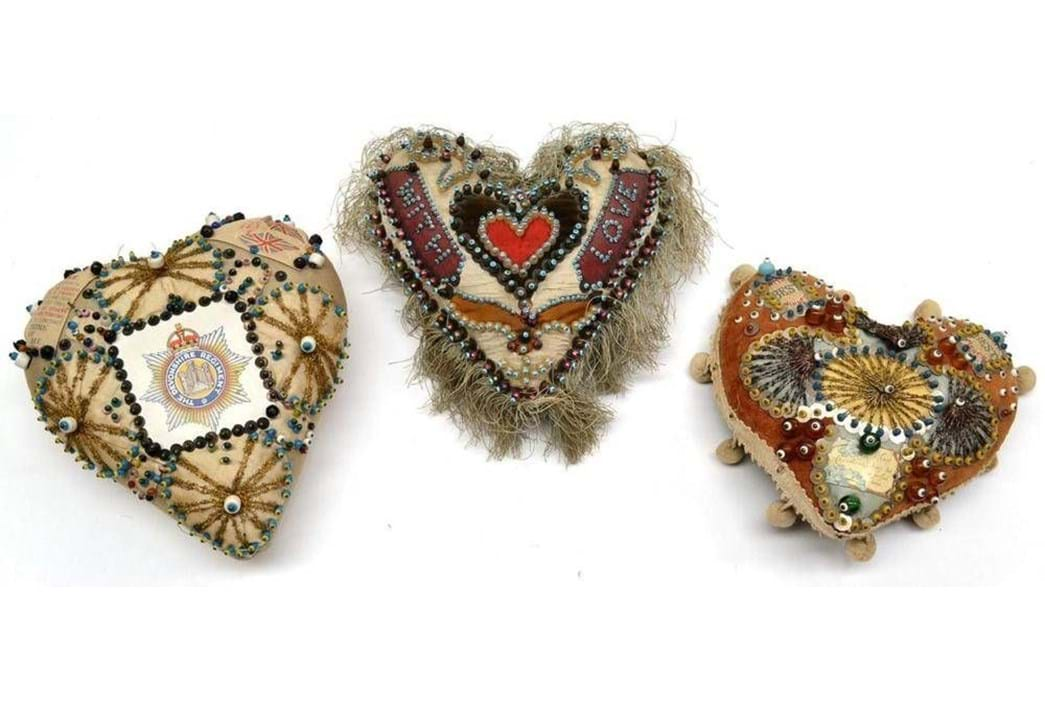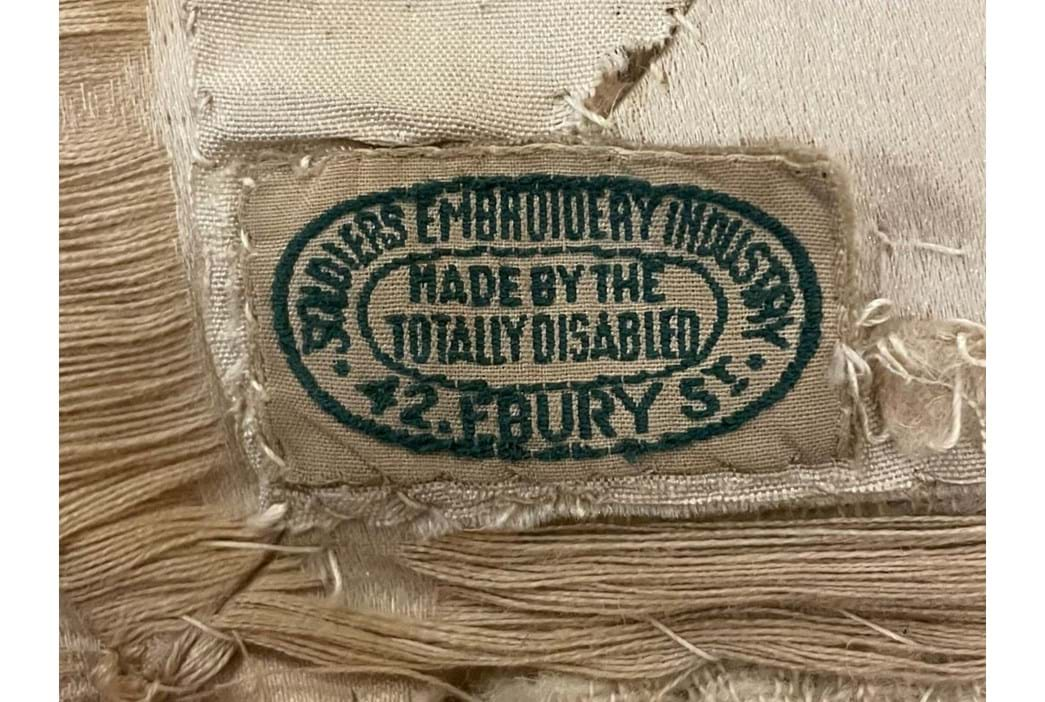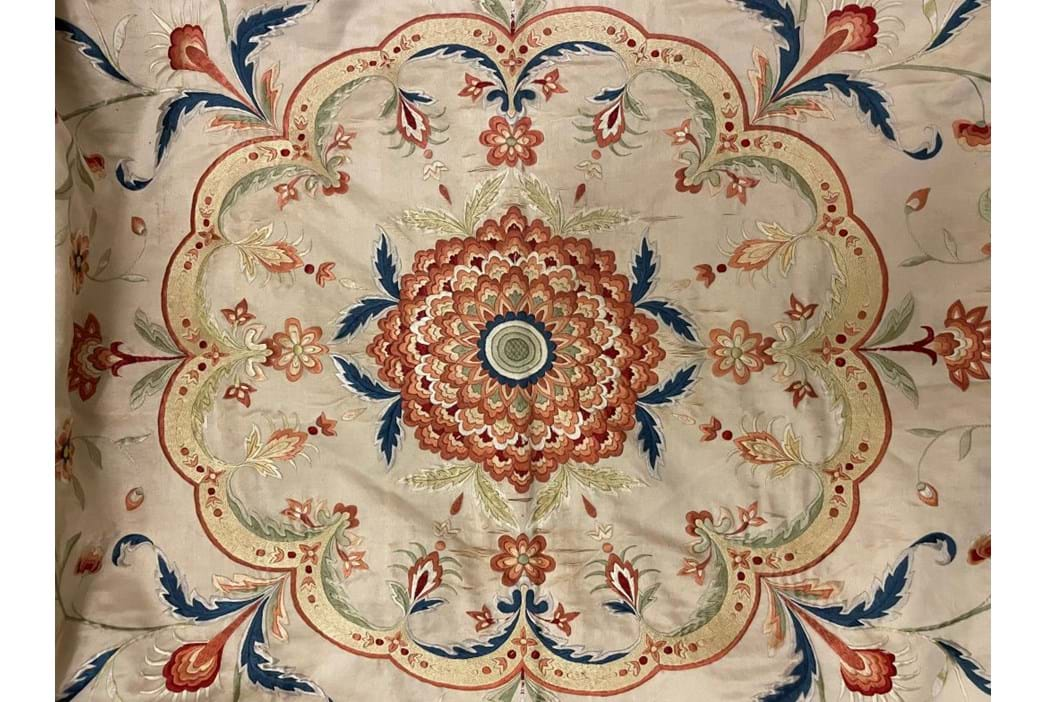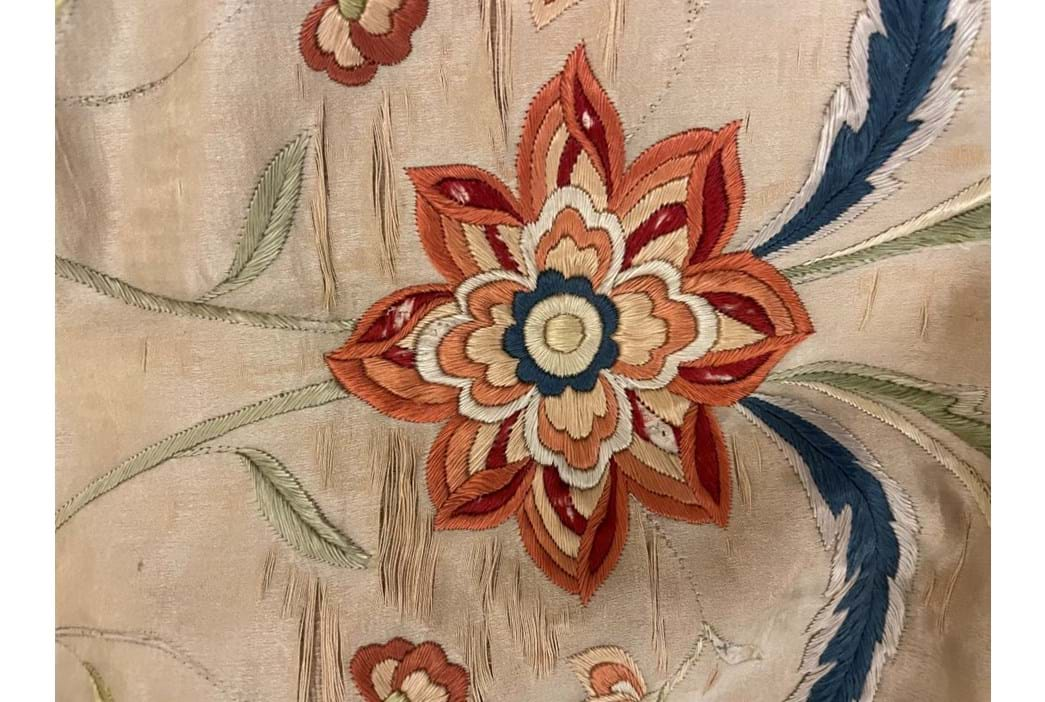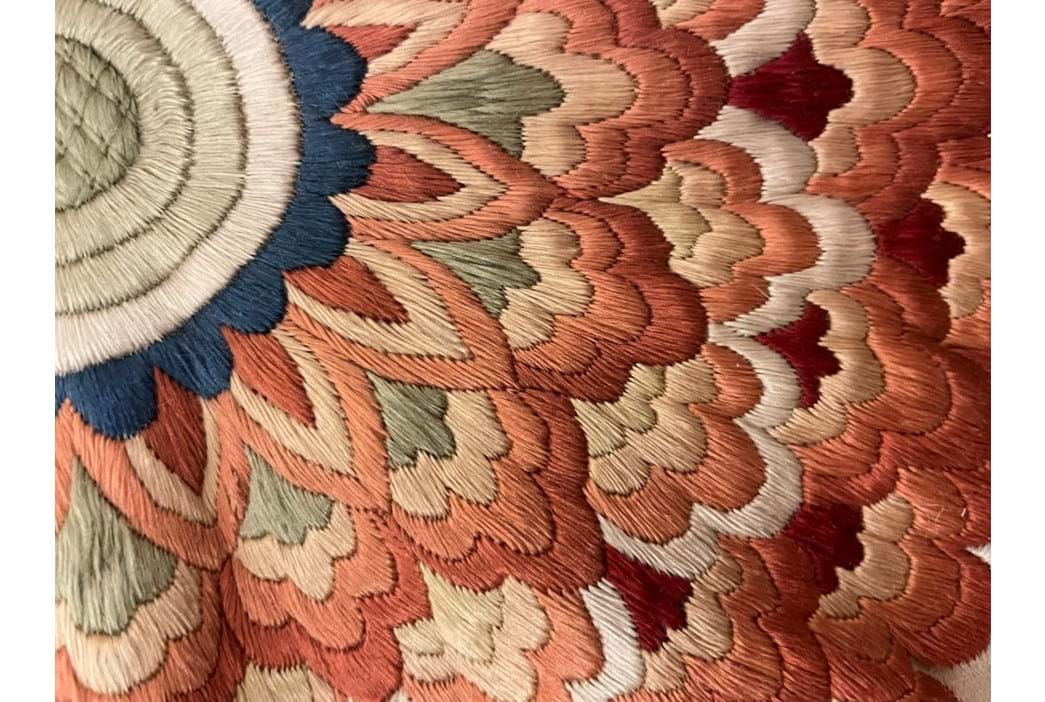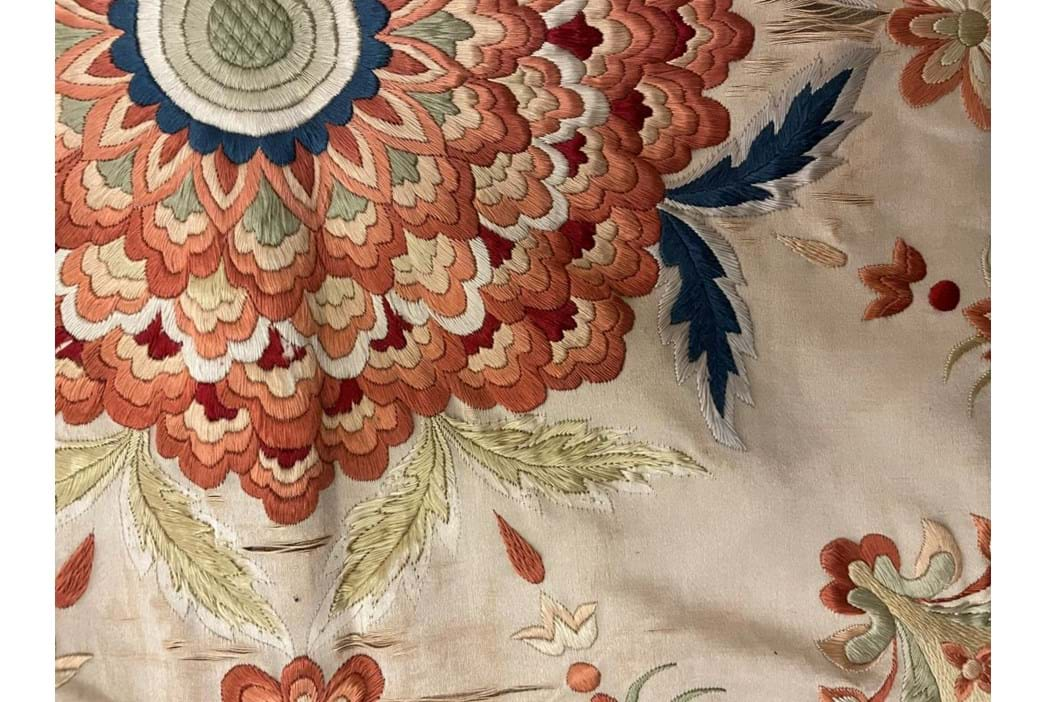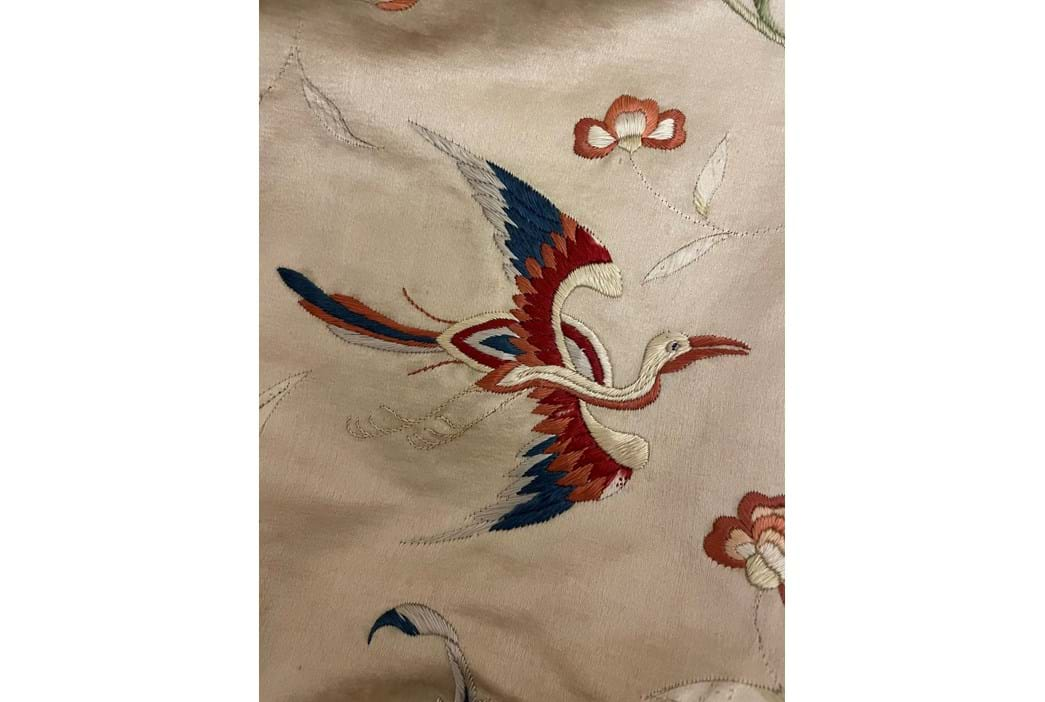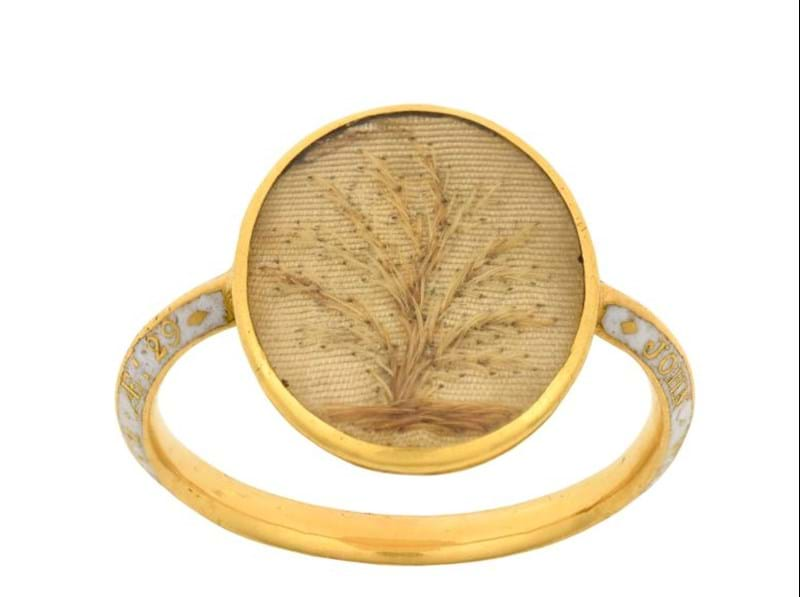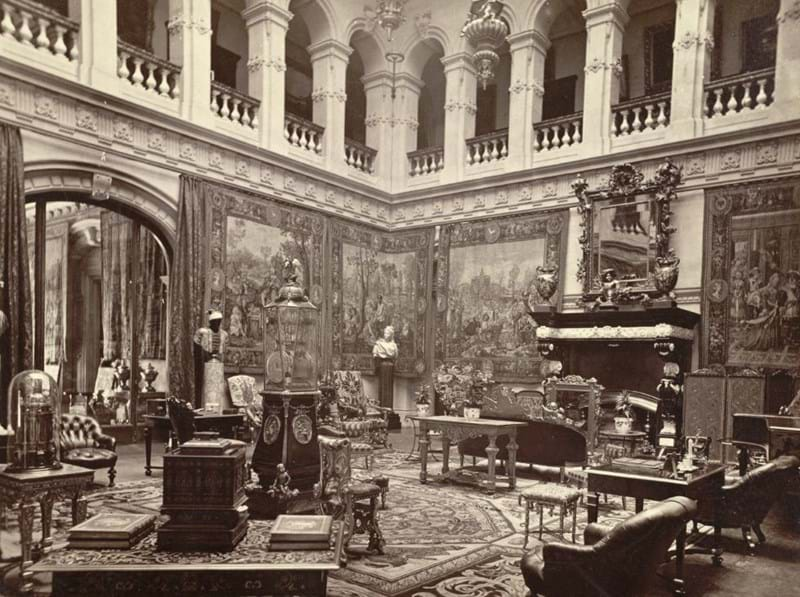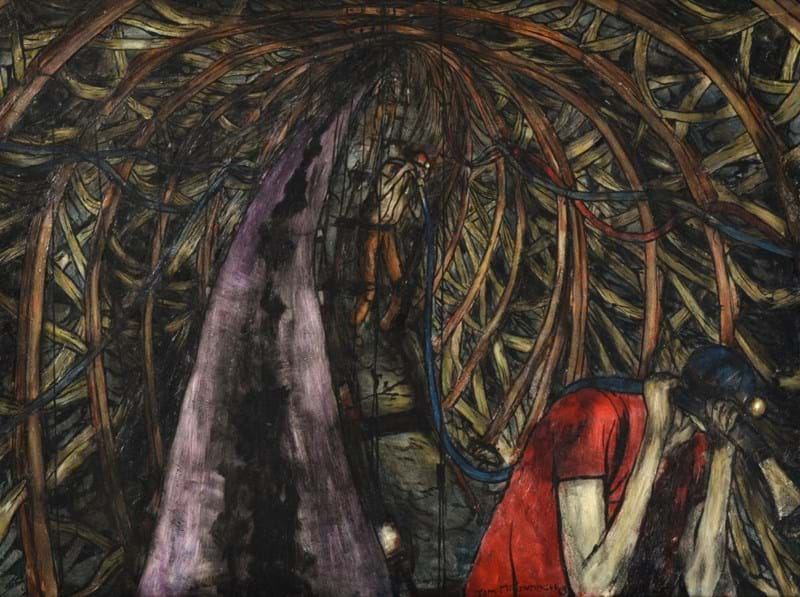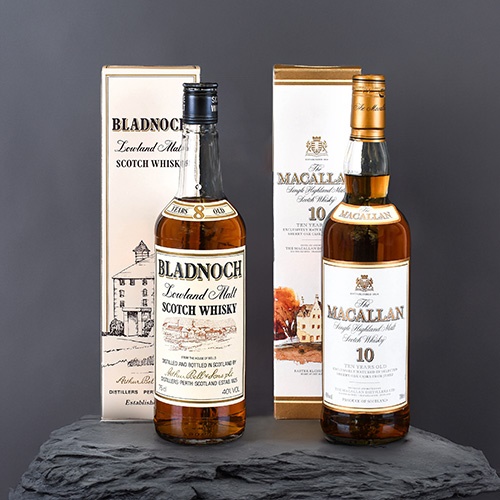A 20th century silk curtain that tells a fascinating story was discovered by specialist Sarah White whilst cataloguing a Private Collection of Textiles with Provenance from the 1st Earl Mountbatten of Burma for the Costume, Accessories and Textiles Sale on 20th August. The curtain is finely worked in Chinese 19th century style embroidery, with a central rosette, birds and scrolling floral decoration in the Kakiemon palette of colours - blues, greens, and reds. However, its true origins were only discovered after a small woven label to the reverse was spotted which reads ‘SOLDIERS EMBROIDERY INDUSTRY / MADE BY THE TOTALLY DISABLED / 42 EBURY STREET’.
Needlework and embroidery were widely adopted by hospitals during the First World War as a form of therapy for injured servicemen. The quiet, repetitive movements required gently exercised muscles and calmed the mind. It gave a focus and often resulted in a finished article that could be sent home to their loved ones as a much-treasured gift. Sweetheart pin cushions were perhaps the most frequently made items, simple to make and easily personalised with names, initials, mottos and insignia.
Ernest Thesiger (1879-1961), grandson of the 1st Lord Chelmsford and notable eccentric, became the driving force that turned a hospital-based therapy into a thriving commercial industry that was instrumental in the revival of embroidery in the 20th century. After attending Marlborough School, Thesiger trained as an artist at the Slade before turning to acting; he would later become a much-loved star of stage and screen as well as a world-class petit point embroiderer. At the outbreak of the First World War he enlisted and was sent to France in 1914 with the 1st Battalion of the Queen Victoria’s Rifles. He later commented at a dinner party when asked what it had been like fighting in the trenches ‘Oh, my dear, the noise! And the people!”
After being wounded in the trenches he was evacuated back to England, where he discovered his fellow patients stitching as they recovered. Thesiger had first become interested in needlework after buying and repairing historical pieces in France and realised that embroidery could be of economic as well as therapeutic benefit to injured soldiers, helping them to back into paid employment. He initially gave soldiers kits he had designed to follow, and subsequently tried to have his scheme officially recognised by the Ministry of Pensions. However, it was deemed too effeminate, so Thesiger and several supporters set up the Soldier’s Embroidery Industry as a charity, which would operate from 1918 to 1955 and employ hundreds of ex-servicemen.
Only fully pensioned men were taken on by the scheme, who were too badly injured or too shell-shocked to be able to do any form of strenuous work, although they would not employ those with infection conditions or skin diseases. Experienced instructors would be sent to their homes, and they were able to work as much as or little as they were able. The average income was 10s a week. Experienced designers were employed, however, as time went on perhaps the soldiers began producing their own designs, too.
At the start of the scheme, they focused on producing cross-stitched chair seats in the 18th century style, Thesiger having realised there was a great demand for re-covering antique furniture. They later expanded into creating elaborate interior furnishing pieces copying historical styles from around the world, and a great number of ecclesiastical textiles including an altar frontal for Buckingham Palace and vestments for the Catholic chapel on the Queen Mary. With Royal patronage and a wide variety of customers from the upper and middle classes, the Soldier’s Embroidery Industry flourished, and it became one of the most celebrated luxury textile workshops in the country.
Sadly, today, very little is known about this extraordinary venture that provided a financial and therapeutic lifeline to countless men, who contributed so much to the art of embroidery.
View Sale


